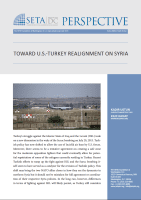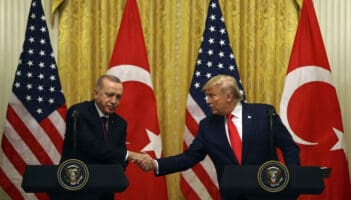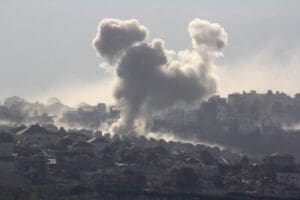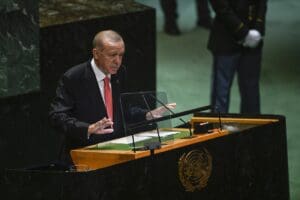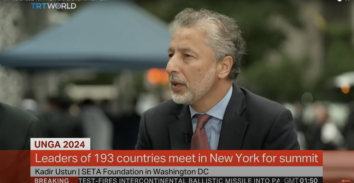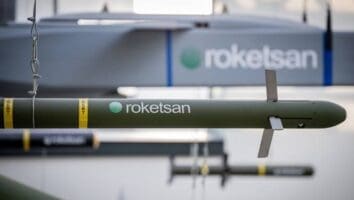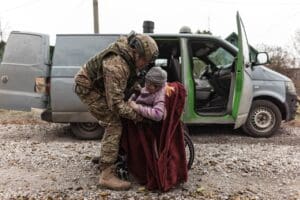Toward U.S.-Turkey Realignment on Syria

Turkey’s struggle against the Islamic State of Iraq and the Levant (ISIL) took on a new dimension in the wake of the Suruc bombing on July 20, 2015. Turkish policy has now shifted to allow the use of Incirlik air base by U.S. forces. Moreover, there seems to be a tentative agreement on creating a safe zone for the moderate opposition fighters that could eventually allow for potential repatriation of some of the refugees currently residing in Turkey. Recent Turkish efforts to ramp up the fight against ISIL and the Suruc bombing itself seem to have served as a catalyzer for the revision of Turkish policy. This shift may bring the two NATO allies closer in how they see the dynamics in northern Syria but https://www.acheterviagrafr24.com/achat-viagra-cialis-en-ligne/ it should not be mistaken for full agreement or coordination of their respective Syria policies. In the long run, however, differences in terms of fighting against ISIL will likely persist, as Turkey still considers ISIL as an outcome of the broader conflict exacerbated by the Assad regime while the U.S. shows no sign of adopting a comprehensive Syria policy to address the challenges beyond ISIL.
Divergent Strategies
Ever since the Kobani resistance in the fall of 2014, which Turkey supported by allowing Kurdistan Regional Government (KRG) forces to pass through its territory and by providing shelter for the civilian population of the town, an increasingly visible divergence between the U.S. and Turkish strategies toward the Syrian civil war has been laid bare. Turkey has insisted on a comprehensive strategy toward the war as a whole before committing militarily in the fight against ISIL in the Syrian territory. The U.S., in contrast, focused narrowly on containing and rolling back ISIL by using local forces such as the Democratic Union Party (PYD) to allow for its “no boots on the ground” approach. Turkey’s priority has been to prevent the inflow of refugees and protect itself against spillover effects of the conflict while helping the Syrian opposition. The fight against ISIL necessitated a serious engagement over the entirety of the conflict in addition to active cooperation among Turkey, the U.S., and the European allies on intelligence related to foreign fighters and ISIL’ financial networks. The U.S. administration, however, adopted a short-term solution by forming an international coalition to conduct air strikes against ISIL, expecting local actors to reclaim territory from ISIL. Based on this approach, the U.S. started to cooperate with the Kurdistan Workers’ Party’s (PKK) Syrian affiliate, the PYD, which added a new dimension to the already existing and deepening disagreement between Turkey and the U.S.
In contrast to such divergence, both the U.S. and Turkey emphasized convergences and cooperation in regards to the broad picture in Syria in an effort to contain the simmering crisis in the bilateral relationship. Despite statements by some U.S. officials suggesting that the Assad regime provided stability, the U.S. and Turkey agreed that the Assad regime created a breeding ground for terrorist networks and the country has turned into a “magnet for terrorism.” Similarly, both countries recognized ISIL as a terrorist organization and a threat to regional and international security. There was also agreement on the necessity to train and equip moderate Syrian opposition forces, however, the program hasn’t made much headway. Still, despite the claims to the contrary, Turkey has been fighting against ISIL more aggressively for more than a year now. Turkish security forces were targeted by ISIL as early as March 2015. Turkey has appeared reluctant precisely because it tried to avoid being dragged into the fighting inside Syria and advocated for a bolder approach by the anti-ISIL coalition. However, the bombings in Diyarbakir and in Suruc demonstrated that ISIL considered Turkey a direct threat to its goals and decided to undertake terrorist actions inside Turkish territory. As a result, the Suruc bombing served as the tipping point for Turkey to assume a greater and more active role in the coalition’s fight against ISIL. The first step of this new strategy included destroying ISIL targets close to the Turkish border through airstrikes, which could help create a de facto safe zone in northern Syria.
In addition to the attacks of ISIL in Turkey against Turkish citizens, a strong incentive for Turkey to be more active across the border was to prevent the PYD’s efforts to modify the region’s demographic realities at the expense of Turkmen and Arab populations. Since fighting broke out in Kobani last fall, the PYD’s strategy has been to present itself as a legitimate, reliable, effective, and secular fighting force against ISIL to garner international support and legitimacy. This strategy has been largely successful, as the western media has been fascinated by the rise of the “Kurds” without recognizing that the PYD does not represent all Syrian Kurds and its claim of independence from the PKK was at best a public relations effort. The fresh “opportunities” in the Syrian territory were a boon to the PKK’s ambition to emerge as a legitimate Pan-Kurdish organization throughout the region. The PKK felt emboldened by the prospect of international legitimacy and this development strengthened its hand against the Turkish government in the resolution process that seeks a peaceful settlement of the Kurdish issue.
PKK’s Regional Ambitions
Turkey’s view of the Syrian conflict and the PYD’s actions cannot be divorced from the Kurdish issue and the dynamics of the search for a political resolution of the decades old conflict. Although Turkey has seen the PYD as the Syrian extension of the PKK, Turkey recognized the realities on the ground from the very beginning and treated it as a rational actor that could cooperate with Turkey. Turkey asked the PYD to distance itself from the Assad regime, to fight alongside the moderate opposition, and to avoid creating autonomous zones at the expense of Syria’s territorial integrity that would further complicate an eventual political solution to the conflict. While the PYD consistently refused to comply with these conditions but it did not openly threaten the NATO-member Turkey. With the emergence and rise of ISIL and its attacks in Kobani, many in the West regarded the PYD as an ally against ISIL on the ground. As a result, despite the deterioration of the situation in Iraq, the priority for the international coalition became Kobani. For many observers, a victory against ISIL in Kobani was important not necessarily for strategic reasons but for symbolic reasons. The U.S. priority to fight ISIL empowered and provided legitimacy for the PYD. The PYD, in turn, started to expand its territorial gains against ISIL with the air support of the international coalition. However, the reports about the PYD’s attempt to demographically homogenize the territories in Tal Abyad by forcibly expelling Turkmens and Arabs and its efforts to unite its three cantons resulted in increasing concern on the part of Turkey about the PYD’s ambitions. Turkey saw this as part of a broader PKK strategy to create an autonomous zone for itself in Syria while the prospect of gaining international legitimacy through its Syrian affiliate unsweetened the peace deal with Turkey for the PKK. The recent escalation in PKK violence demonstrates a lack of willingness on the part of the PKK leadership to move forward with the peace process.
Taking advantage of the Syrian conflict, the PKK sought to increase its regional reach and mobilize the Kurdish youth for its ambitions inside Syria rather than to take serious steps toward completing the resolution process by exiting Turkey and committing to full disarmament. The October 2014 events resulted in 52 deaths as a result of the PKK and the People’s Democratic Party’s (HDP) calls to protest the government for not helping the PYD in Kobani. This marked one of the bloodiest events in recent years inside Turkey. The PKK through its affiliated youth branches attacked government buildings and offices and tried to import the Syrian conflict into Turkey by attacking more conservative segments of the Kurdish society. Since the crisis in Kobani, the resolution process faced various challenges, including the slowing down of the process, the sudden decline in public support for the process due to the October 2014 events, and increasing reluctance of the PKK to abide by its commitments. In fact, the Union of Kurdish Communities (KCK) leadership had already declared an end to the ceasefire on July 11, 2015, nine days prior to the Suruc bombing. This statement obviously challenged the resolution process and has complicated the situation on Syria-Turkish border.
In addition to increasing the PKK activity in Turkey, two recent developments on the Turkish-Syria border have forced Turkish policy makers to adapt to these changing circumstances by changing its counterterrorism doctrine. First, the PYD’s victory in Tal Abyad precipitated yet another refugee flow into Turkey amidst accusations of ethnic cleansing by the PYD forces. Second, ISIL began to attack Azez, which was controlled by the Free Syrian Army (FSA). It was obvious that a possible victory of ISIL in this city would lead to another major refugee flow. This situation forced Turkey to recalibrate its strategy against these terrorist groups. Following the summary executions of Turkish security forces personnel by the PKK and with the attack in Suruc, Turkey decided to adopt a more pre-emptive strategy against all of the terrorist groups operating alongside its borders. At this point, while Turkey is not targeting the PYD in Syria, its most recent deal with the U.S. in part may help to create an ISIL-free zone that would limit the territorial expansion of ISIL and the PYD at the same time. This would also stop the emergence of more chaos and conflict in this region and stop the flow of the refugees. By ensuring that the PYD’s reach remains limited and ISIL is pushed away from its border, Turkey is also setting out to contain the PKK’s regional ambitions and confront ISIL more aggressively. If the creation of an undeclared safe zone succeeds through U.S.-Turkey cooperation, further refugee inflows could be prevented and potentially some refugees can be repatriated under the protection of the moderate opposition forces in addition to the strategic considerations discussed above.
It is often argued that Turkey is opposed to Kurdish national ambitions as a result of its inherent “Kurdish allergy,” but this is an overly simplistic view. Turkey has strong relations with the KRG that does not pose any threats to Turkey. Cooperation between the KRG and Turkey is comprehensive and exemplary in many ways given the regional dynamics as well as national considerations. The PKK, in contrast, continues to threaten Turkey’s sovereignty and refuses to disarm despite the historic progress on the Kurdish issue through the resolution process. The PYD is busy taking advantage of the vacuum created by the civil war in Syria while at the same time the PKK is using this opportunity as leverage against Turkey by legitimizing itself as a bulwark against ISIL terrorism. Turkey’s approach toward the PYD could be significantly different if there were no threats by the PKK against Turkey.
Need for a Broader Strategy
Despite the current convergence of strategy between the U.S. and Turkey regarding ISIL’s presence in northern Syria, the two allies have yet to forge a common and comprehensive strategy on how to deal with the civil war. The Iran nuclear deal may create an opportunity to have a serious conversation with Iran over Syria but it is not easy to imagine a drastic change in Iranian policy. Russia may be willing to prioritize ISIL but it probably would not be amenable to a regime change in Damascus, except perhaps in name only sometime in the distant future. That leaves two main backers of the Assad regime without any serious incentives to drop the Assad regime. The way to change their calculus is by changing the realities on the ground, such as establishing zones that the moderate opposition forces can reliably control and govern. Enlargement of such zones at the expense of ISIL and the Assad regime may be possible through a closer cooperation between the U.S. and Turkey as well as other coalition partners. In order for this to happen, however, the allies have to work harder to forge a common view of the conflict and create a strategy for a political endgame in addition to changing the dynamics on the ground in the moderate opposition’s favor.
While the fight against ISIL is essential for the region’s stability and Turkey’s own security, the prospect of renewed fighting with the PKK and its ambition to carve out a portion of Syria are equally, if not more, important for Turkey. While prioritizing the fight against ISIL, the U.S. needs to avoid underestimating or downplaying Turkey’s security concerns. The most recent realignment between the U.S. and Turkey is a promising step in the right direction on this front. A more forward leaning Turkish posture in Syria is an advantage for the effectiveness of the U.S. efforts but these will remain limited if not followed up with a comprehensive Syria strategy. Otherwise, the most recent realignment between Turkey and the U.S. may prove to be temporary and create further complications in the bilateral relations of the two allies.
For many in Turkey, the decades old belief that the U.S. intends to create an independent Kurdistan that would partition Turkey appears as if it is becoming a reality. This perception can inflict great damage on the U.S.-Turkey relationship. If a new Kurdish autonomous entity becomes permanently established in northern Syria, Turkey may eventually work with it, as it has done with KRG. But in a scenario where Turkey is threatened by such an entity or by the PKK’s efforts to use it as its backyard, cooperation would be impossible and Turkey could come into conflict with a U.S.-enabled entity in northern Syria. Prospects such as this make it imperative that the U.S. and Turkey bolster their efforts to create a common political understanding on Syria.

